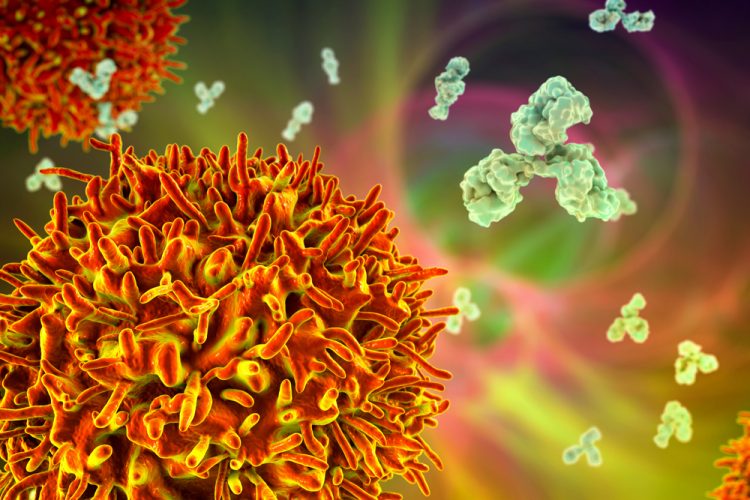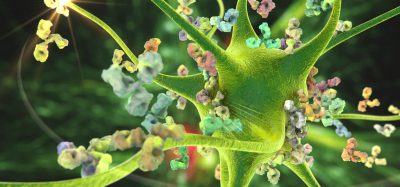Scientists discover novel B cell that tempers autoimmunity
Posted: 10 December 2021 | Anna Begley (Drug Target Review) | No comments yet
Infusions of purified IL-27 regulatory B cells (I27-Bregs) reduced symptoms in mouse models of multiple sclerosis and autoimmune uveitis.


Researchers at the National Eye Institute (NEI), US, have identified, isolated, and characterised a unique population of B cells that tamps down the immune system. Infusions of purified IL-27 regulatory B cells (I27-Breg ) reduced symptoms in mouse models of multiple sclerosis (MS) and the eye disease autoimmune uveitis, suggesting that the cells may play a role in future human therapies.
NEWS: Altered fat metabolism shown to play a key role in ALS
Current therapies for uveitis include corticosteroids; however, prolonged use of these drugs risks other eye problems such as optic neuropathy andsteroid-induced glaucoma. Regulatory B cells (Bregs) are a newly designated B-cell subset that plays a pivotal role in regulating inflammation, autoimmunity, and cancer.
The scientists discovered Bregs when treating rheumatoid arthritis with Rituximab, an anti-CD20 monoclonal antibody. Rituximab depleted B cells expressing the B-lymphocyte antigen CD20. As most Bregs derive from plasma blasts or plasma cell, CD20 depletion led to expansion and eventual discovery of IL-10 secreting B cells (IL-10 Bregs) that exhibit anti-inflammatory characteristics.
In 2014, the team reported the discovery of another anti-inflammatory Breg that releases IL-35. They showed that i35-Bregs suppress central nervous system (CNS) autoimmune disease by inducing expansion of IL-10 Bregs. Paired with 2007 findings, in which they showed that IL-27 increases IL-27 expression by retinal cells in response to inflammation and that IL-27 and IL-35 are structurally and functionally similar, researcher Dr Charles Egwuagu posited the existence of an IL-27-secreting B-cell population.
The team used a variety of assays to demonstrate the existence of IL-27-producing regulatory B cells (i27-Bregs) in the peritoneal cavity of mice. Further analyses showed that upon encounter with innate immune stimuli, the cells lose their ability to produce natural IgM antibodies and differentiate into IL-27-producing B-1a cells. They then migrate from the peritoneal cavity to secondary lymphoid tissues such as the spleen. The researchers also found a significant amount of i27-Bregs in human umbilical cord blood.
The researchers subsequently examined whether i27-Breg immunotherapy would be effective in suppressing autoimmune uveitis or a MS-like disease in mice. Infusion of purified i27-Breg ameliorated uveitis and MS through up-regulation of inhibitory receptors (Lag3, PD-1), suppression of T-cell (Th17/Th1) responses, and propagation of inhibitory signals that converted conventional B cells to regulatory lymphocytes that secrete IL-10 and/or IL-35 in eye, brain, and spinal cord.
Additionally, the team found that i27-Bregs proliferate in vivo and sustain IL-27 secretion in the central nervous system (CNS) and lymphoid tissues, a therapeutic advantage over administering IL-10 or IL-35 biologics, which are rapidly cleared in the body. i27-Breg infusions into mice lacking the IL-27 receptor failed to attenuate disease symptoms, demonstrating that IL-27 is necessary for successful treatment. i27-Bregs are neither antigen-specific or disease-specific, suggesting that they would be effective immunotherapy for a wide spectrum of autoimmune diseases. The full results are detailed in PNAS.
NEWS: “Overlooked” FAM72A gene shines light on antibody production
“Whereas i35-Breg and i27-Breg have similar functions, i27-Breg may have greater therapeutic potential,” explained first author Dr Jin Kyeong Choi. “i27-Breg can proliferate after they are injected, unlike i35-Bregs, which stop dividing when mature. In addition, i27-Breg more quickly respond to autoimmune disease.”
The researchers are currently exploring the use of exosomes as a potential vector for delivering lab-grown IL-27 into the body. Such an approach would be less technically challenging than generating i27-Breg cells in the lab.
Related topics
Antibodies, Central Nervous System (CNS), Disease Research, Immunology, In Vivo, Molecular Biology
Related conditions
Multiple Sclerosis (MS), Uveitis
Related organisations
US National Eye Institute (NEI)
Related people
Charles Egwuagu, Jin Kyeong Choi








